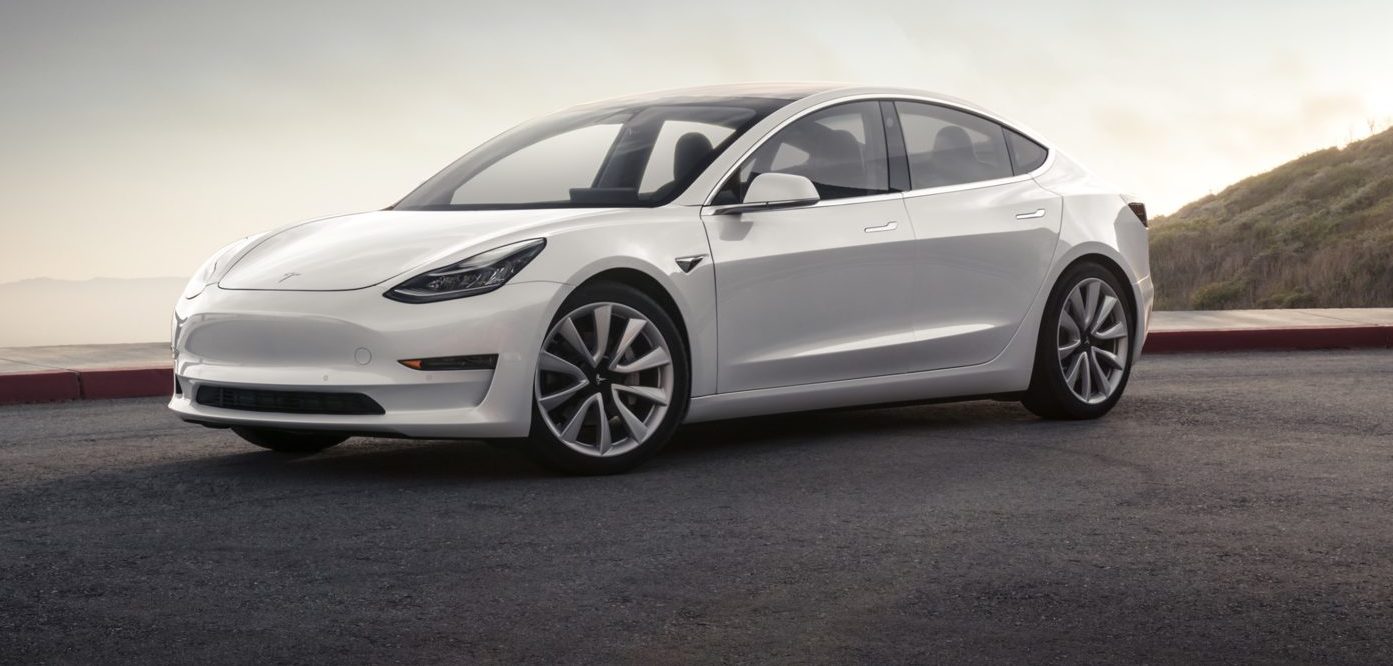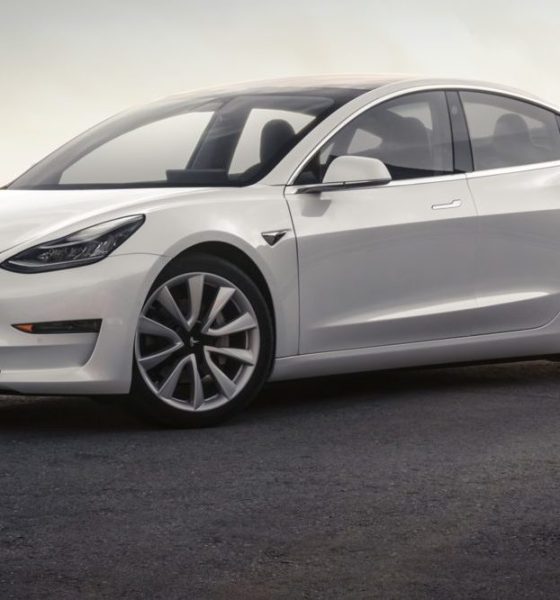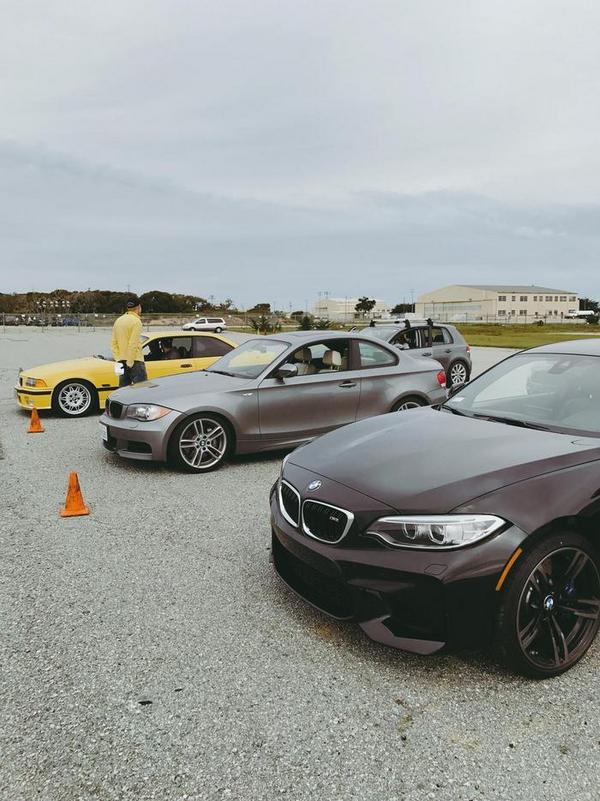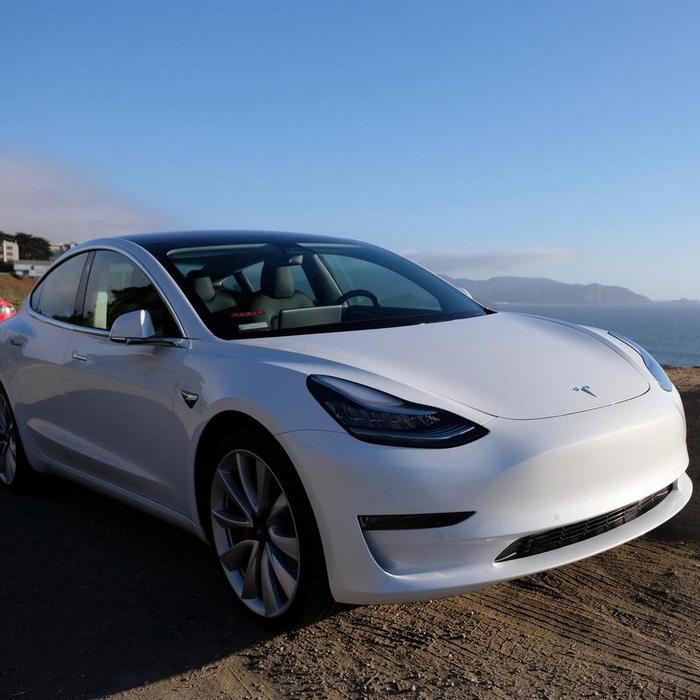

News
Tesla Model 3 Performance wins over longtime BMW enthusiast: ‘this is an iPhone moment’
Indie app developer Moshen Chan has been an avid BMW enthusiast for ~20 years. Having a passion for high-speed driving, he has spent a lot of time experiencing the legacy automaker’s Ultimate Driving Machines firsthand. Moshen now drives a Tesla Model 3 Performance, after a test drive with the electric sedan proved that it was a powerful, feature-ridden, and compelling vehicle that could very well be beyond anything that the German veteran automaker currently has to offer.
The indie app developer shared his experience in a series of lengthy posts on a BMW forum, Bimmerfest.com. Chan notes that over the years, he has driven several BMWs, and today, he owns a modified E36 325i with track suspension setup, as well as an E82 135i with Performance Suspension and several other M3 suspension part upgrades. Being in the market for a new vehicle, he was looking at the BMW M2 Competition, the latest iteration of the BMW M3, and lastly, the Tesla Model 3 Performance.

The test drive with the Model 3 Performance proved to be the difference-maker. The BMW enthusiast stated that he was simply blown away by the vehicle, from its hyper-low center of gravity, its low polar moment of inertia, to its silent, instant, brutal acceleration. Chan stated that Tesla ultimately “threw a curve-ball to everything (he) knew about sport sedans & performance cars” and that overall, the Model 3 Performance “absolutely outperforms anything BMW has to offer today.” The app developer further noted that his test drive with the Model 3 Performance was an “iPhone moment.”
“I can say I was very hesitant on the ultra minimalist interior but now I absolutely love it. For me this is an iPhone moment – when a new product suddenly makes everything else seem outdated and old,” Chan wrote.
The indie app developer admits that his Model 3 Performance is not a perfect car and that Tesla still has a lot to learn in terms of customer service, delivery, and providing enough spare parts for its ever-growing fleet. Despite these, Chan noted that he has no regrets with the Model 3 Performance, as the car has now taken over the mantle of the “Ultimate Driving Machine,” at least in terms of his current standards.
“BMW has better build quality. It has more refined finishing and details. That stuff makes me feel good, I guess. But for me, it’s the driving experience that really matters. The overall package of what the Performance Model 3 does for me – greatly makes up for those areas that BMW is better at,” he wrote.
The BMW enthusiast notes that he is not the only one in his circle who committed to the Model 3 Performance. One of his acquaintances, a driving instructor for his local BMW CCA, is selling his M3 and ordering the electric sedan after a test drive as well. Chan, for his part, notes that he would still be keeping his E36 325i for days when he feels like driving a manual transmission, but his E82 135i is going up for sale soon.

The Model 3 Performance is Tesla’s latest high-performance vehicle. Being the first P-branded model fitted with the company’s 2170 cells, the Model 3 Performance is looking to be the first of Tesla’s vehicles that can be driven hard for extended periods of time. When Elon Musk announced the vehicle’s specs, he noted that the electric sedan would be ~15% faster than a BMW M3 around the track. Later reviews of the car from prominent auto publications such as Car & Driver and Road & Track have compared the Model 3 Performance favorably to Germany’s best high-performance sedans like the BMW M3 and the Audi RS5 as well.
It should be noted that the Model 3 Performance’s killer feature has not been rolled out to the fleet as of yet. Tesla has revealed that the Model 3 Performance would eventually be given a dedicated Track Mode, which Elon Musk dubs as an “Expert User Mode” for the vehicle. Initial tests of Track Mode have been positive so far, with reviewers stating that the feature allows drivers to perform advanced, aggressive driving maneuvers (such as drifting) without any issues.
Even without Track Mode, the Model 3 Performance is already establishing itself as a quick, capable vehicle, and one that is seemingly more powerful than what Tesla suggests. The electric car’s 0-60 mph acceleration, for one, is listed as 3.5 seconds by the company, but VBOX tests on a fully charged, completely stock Model 3 Performance show that the vehicle is capable of going from 0-60 mph in just 3.18 seconds. With an upgraded suspension setup, better tires, and Tesla’s future software updates, it would not be too improbable look forward to a Model 3 Performance doing 0-60 in 3 seconds flat.

Elon Musk
Starlink achieves major milestones in 2025 progress report
Starlink wrapped up 2025 with impressive growth, adding more than 4.6 million new active customers and expanding service to 35 additional countries, territories, and markets.

Starlink wrapped up 2025 with impressive growth, adding more than 4.6 million new active customers and expanding service to 35 additional countries, territories, and markets. The company also completed deployment of its first-generation Direct to Cell constellation, launching over 650 satellites in just 18 months to enable cellular connectivity.
SpaceX highlighted Starlink’s impressive 2025 progress in an extensive report.
Key achievements from Starlink’s 2025 Progress
Starlink connected over 4.6 million new customers with high-speed internet while bringing service to 35 more regions worldwide in 2025. Starlink is now connecting 9.2 million people worldwide. The service achieved this just weeks after hitting its 8 million customer milestone.
Starlink is now available in 155 markets, including areas that are unreachable by traditional ISPs. As per SpaceX, Starlink has also provided over 21 million airline passengers and 20 million cruise passengers with reliable high-speed internet connectivity during their travels.
Starlink Direct to Cell
Starlink’s Direct to Cell constellation, more than 650 satellites strong, has already connected over 12 million people at least once, marking a breakthrough in global mobile coverage.
Starlink Direct to Cell is currently rolled out to 22 countries and 6 continents, with over 6 million monthly customers. Starlink Direct to Cell also has 27 MNO partners to date.
“This year, SpaceX completed deployment of the first generation of the Starlink Direct to Cell constellation, with more than 650 satellites launched to low-Earth orbit in just 18 months. Starlink Direct to Cell has connected more than 12 million people, and counting, at least once, providing life-saving connectivity when people need it most,” SpaceX wrote.
News
Giga Nevada celebrates production of 6 millionth drive unit
To celebrate the milestone, the Giga Nevada team gathered for a celebratory group photo.

Tesla’s Giga Nevada has reached an impressive milestone, producing its 6 millionth drive unit as 2925 came to a close.
To celebrate the milestone, the Giga Nevada team gathered for a celebratory group photo.
6 million drive units
The achievement was shared by the official Tesla Manufacturing account on social media platform X. “Congratulations to the Giga Nevada team for producing their 6 millionth Drive Unit!” Tesla wrote.
The photo showed numerous factory workers assembled on the production floor, proudly holding golden balloons that spelled out “6000000″ in front of drive unit assembly stations. Elon Musk gave credit to the Giga Nevada team, writing, “Congrats on 6M drive units!” in a post on X.
Giga Nevada’s essential role
Giga Nevada produces drive units, battery packs, and energy products. The facility has been a cornerstone of Tesla’s scaling since opening, and it was the crucial facility that ultimately enabled Tesla to ramp the Model 3 and Model Y. Even today, it serves as Tesla’s core hub for battery and drivetrain components for vehicles that are produced in the United States.
Giga Nevada is expected to support Tesla’s ambitious 2026 targets, including the launch of vehicles like the Tesla Semi and the Cybercab. Tesla will have a very busy 2026, and based on Giga Nevada’s activities so far, it appears that the facility will be equally busy as well.
News
Tesla Supercharger network delivers record 6.7 TWh in 2025
The network now exceeds 75,000 stalls globally, and it supports even non-Tesla vehicles across several key markets.

Tesla’s Supercharger Network had its biggest year ever in 2025, delivering a record 6.7 TWh of electricity to vehicles worldwide.
To celebrate its busy year, the official @TeslaCharging account shared an infographic showing the Supercharger Network’s growth from near-zero in 2012 to this year’s impressive milestone.
Record 6.7 TWh delivered in 2025
The bar chart shows steady Supercharger energy delivery increases since 2012. Based on the graphic, the Supercharger Network started small in the mid-2010s and accelerated sharply after 2019, when the Model 3 was going mainstream.
Each year from 2020 onward showed significantly more energy delivery, with 2025’s four quarters combining for the highest total yet at 6.7 TWh.
This energy powered millions of charging sessions across Tesla’s growing fleet of vehicles worldwide. The network now exceeds 75,000 stalls globally, and it supports even non-Tesla vehicles across several key markets. This makes the Supercharger Network loved not just by Tesla owners but EV drivers as a whole.
Resilience after Supercharger team changes
2025’s record energy delivery comes despite earlier 2024 layoffs on the Supercharger team, which sparked concerns about the system’s expansion pace. Max de Zegher, Tesla Director of Charging North America, also highlighted that “Outside China, Superchargers delivered more energy than all other fast chargers combined.”
Longtime Tesla owner and FSD tester Whole Mars Catalog noted the achievement as proof of continued momentum post-layoffs. At the time of the Supercharger team’s layoffs in 2024, numerous critics were claiming that Elon Musk was halting the network’s expansion altogether, and that the team only remained because the adults in the room convinced the juvenile CEO to relent.
Such a scenario, at least based on the graphic posted by the Tesla Charging team on X, seems highly implausible.







